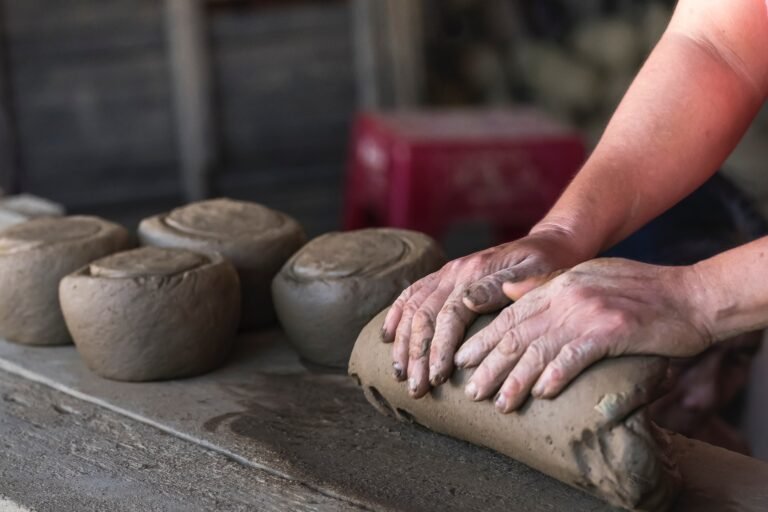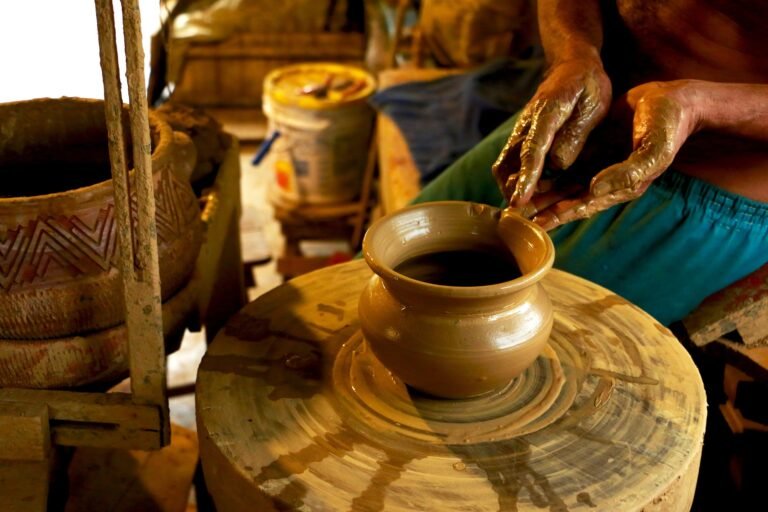Why is China pottery called China?
China pottery is a type of ceramic that has a high aesthetic value, as well as is sturdy. It is often called China or chinaware; Because it was first made in China. Chinese pottery is characterized by whiteness, delicate appearance, and transparency. Because it is the strongest ceramic product, it is used in electrical insulators and laboratory equipment.
Despite this, pottery is known primarily as the material for high-quality vases and tableware, as well as figurines and other decorative objects. The type of China used for such purposes makes a bell-like sound when it strikes. Chinese pottery differs from other types of pottery in its components and the process by which it is produced. There are two general types of ceramics, they are earthenware and stoneware, both of which are made of a single natural clay that is burnt (roasted).
In many cases, the body is covered with a vitreous substance known as glaze. When burning at a low temperature, it produces pottery vessels, which are a porous material.
And clay pottery can be made so that the water does not percolate, by glazing it. Combustion at high temperatures produces hard and heavy stone vessels. Clay porcelain is non-porous without glaze.
In contrast to earthenware and stoneware, China is made primarily of a mixture of kaolin and pitons. Kaolin is the pure white clay that forms when aluminum silicates (feldspar) decompose.
Types of Chinese Pottery:
Tang Sancai pottery:
Which means “three colors“, refers to the nature of colored glazed pottery. It is not limited to only three colors, although the predominant colors in it are: brown, green, and light white. Manufactured under a lower temperature than other types of porcelain, it was also commonly used with decorative ceramic figurines, such as miniature terracotta horses.

Rabbit fur:
It is an iron-rich clay subjected to high temperatures, to create a bright black molten glaze. This pattern was later used to create other effects and was also copied by Japanese potters.
Blue and white pottery:
It is the most famous pottery of all kinds, famous for the stunning vibrancy of blue glaze with the purity of fine white porcelain, and it was the most famous of the blue and white porcelain kilns in Jingdezhen (the porcelain capital) in China.
Five-color pottery:
This type was used in the manufacture of pots by applying a range of glaze pigments to floral, landscape, and figurative designs, which gained great popularity in the West.
White porcelain:
It is a classic type of traditional Chinese porcelain, which was widespread in the Song era. White porcelain was distinguished by its simple and elegant style and its shiny jade-like surface.
Celadon Pottery:
Traditional Chinese porcelain with a green coating, which was highly-priced before blue and white porcelain took center stage and was highly regarded by the Chinese imperial court.
Is China Pottery From China?
China invented pottery ten thousand years ago, and six thousand years ago it was able to make pottery vessels that were practical and aesthetically pleasing. As for Chinese porcelain, it appeared in the era of Shang and Zhou between the early seventeenth century BC and the year 256 BC and passed the transitional phase from primitive Chinese ceramics to ordinary Chinese ceramics that lived through the Eastern Han period (25 BC – 220 AD).
During the era of the Three Kingdoms and the Western and Eastern Jin Dynasties (220-420), it was able to make exquisite green or black Chinese porcelain vessels in Jiangsu and Zhejiang. During the long historical period between the Tang and Ming dynasties, the Chinese ceramics industry did not stop progressing, to the extent that it extracted the admiration of various nations and spread its fame throughout the world.
Why Are Cups And Saucers Called China?
If we talk about the art that distinguishes China from all other nations, and which no one disputes that it bears its flag in the whole world, we find in ourselves a strong tendency to consider ceramics as one of the industries. About 100 years ago, China had the best technology in the ceramics industry and they were practically the only nation that could make fine porcelain. For that reason, people in the West would call cups, saucers, and other porcelain “China” or “Chinaware”
When Did Chinese Pottery Originate?
Ancient Chinese Pottery: Traces of earthenware dating back to 17,000 or 18,000 years ago were found in southern China, and this era is considered one of the oldest eras of pottery in the world. Pottery then developed in the ancient city of Changnan (the capital of pottery) by gathering natural resources using natural celadon and glaze from southern Yu, and pure white porcelain from northern Xing and produced smooth, bright, and luminous pottery, which was called artificial jade.
(Seventh to tenth centuries AD):
During this period, types of pottery developed, and various dyes and stains appeared, such as three-colored glass pieces, celadon pieces glazed with lemon, and transparent white porcelain.
(10th – 14th century AD):
It was during the Song and Yuan Dynasty when Jingdezhen became the central hub for pottery production.
(14th to 17th century AD):
The Ming Dynasty witnessed great and real development. Extensive artistic innovations emerged, unusual new forms and techniques were experimented with, and contrasting pigments were used. This period was the best period in which Chinese pottery was produced, which placed China at the center of a thriving international import and export community.
(17th century – 20th century AD):
In the Qing Dynasty, the tradition of manufacturing and exporting high-quality wares continued.









